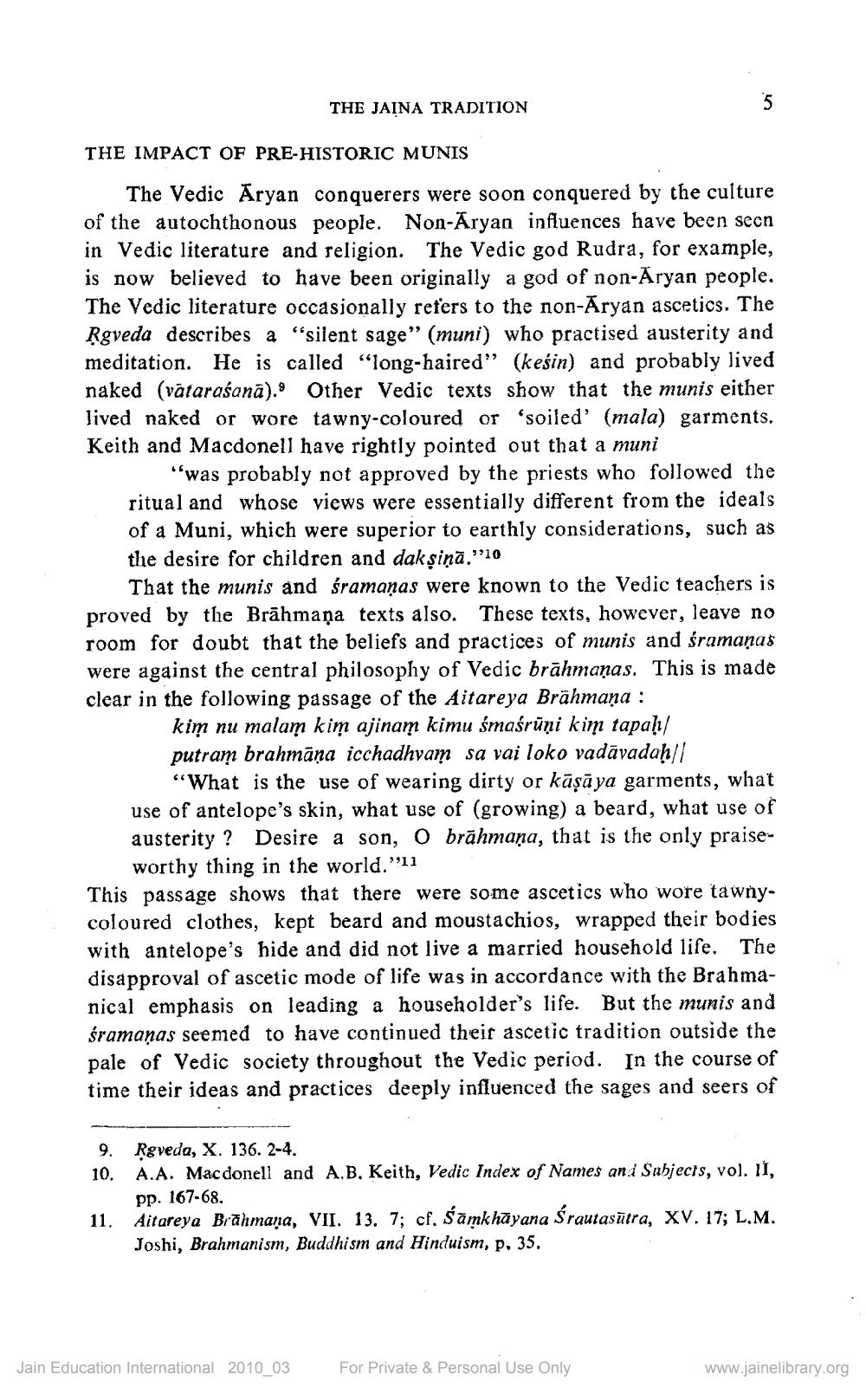________________
THE JAINA TRADITION
THE IMPACT OF PRE-HISTORIC MUNIS
The Vedic Aryan conquerers were soon conquered by the culture of the autochthonous people. Non-Aryan influences have been seen in Vedic literature and religion. The Vedic god Rudra, for example, is now believed to have been originally a god of non-Aryan people. The Vedic literature occasionally refers to the non-Aryan ascetics. The Ṛgveda describes a "silent sage" (muni) who practised austerity and meditation. He is called "long-haired" (kesin) and probably lived naked (vatarasana). Other Vedic texts show that the munis either lived naked or wore tawny-coloured or 'soiled' (mala) garments. Keith and Macdonell have rightly pointed out that a muni
"was probably not approved by the priests who followed the ritual and whose views were essentially different from the ideals of a Muni, which were superior to earthly considerations, such as the desire for children and dakṣiņā.”10
That the munis and śramaṇas were known to the Vedic teachers is proved by the Brahmaņa texts also. These texts, however, leave no room for doubt that the beliefs and practices of munis and śramaņas were against the central philosophy of Vedic brahmanas. This is made clear in the following passage of the Aitareya Brāhmaṇa:
kim nu malam kim ajinam kimu śmaśrūņi kim tapah putram brahmāņa icchadhvam sa vai loko vadāvadaḥ||
"What is the use of wearing dirty or kāṣāya garments, what use of antelope's skin, what use of (growing) a beard, what use of austerity? Desire a son, O brāhmaṇa, that is the only praiseworthy thing in the world."11
5
This passage shows that there were some ascetics who wore tawnycoloured clothes, kept beard and moustachios, wrapped their bodies with antelope's hide and did not live a married household life. The disapproval of ascetic mode of life was in accordance with the Brahmanical emphasis on leading a householder's life. But the munis and śramaņas seemed to have continued their ascetic tradition outside the pale of Vedic society throughout the Vedic period. In the course of time their ideas and practices deeply influenced the sages and seers of
11.
9. Rgveda, X. 136. 2-4.
10.
A.A. Macdonell and A.B. Keith, Vedic Index of Names and Subjects, vol. II, pp. 167-68.
Aitareya Brahmana, VII. 13. 7; cf. Śāmkhāyana Śrautasutra, XV. 17; L.M. Joshi, Brahmanism, Buddhism and Hinduism, p. 35.
Jain Education International 2010_03
For Private & Personal Use Only
www.jainelibrary.org




